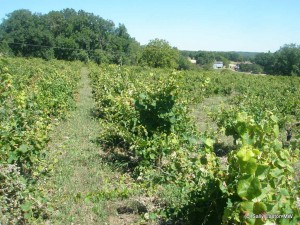Mauzac

Mauzac, Gaillac
I’ve long been a fan of minority grape mauzac blanc. In the previous millennium I did a stage at Domaine de Causse Marines, in the cultivar’s homeland of Gaillac. I learnt about its appley freshness and the variety of styles it makes, from dry to sweet and sparkling, especially by the traditional local méthode ancestrale.
Acidity levels are the key to style selection, presumably as with many other varieties used to make styles from sparkling to sweet. Picked early, with high acidity for bubblies. Acidity drops with ripening opening up the option for sweet wines.
Mauzac is the main grape of still white Gaillac wines, along with another local bod, l’en de l’el (or l’oin de l’oeil – far from the eye, describing the bunch in relation to the bud, i.e. the bunches have long stems), and more widely recognised muscadelle. The bubbly versions are all mauzac. Mauzac accounts for about 60% of white plantings in Gaillac.
In a book by reputed Gaillac producer Robert Plageoles, ‘La saga des cépages gaillacois et tarnais en 2000 ans d’histoire’, there are seven types of mauzac, six white and one red.
Wine Grapes (link) sadly reports declining plantings over the last 50 years to less than 2,000 ha. Encouragingly it adds there’s more mauzac than either marsanne or roussanne!
Mauzac is also important in not-too-distant Limoux, where it is found in three local bubblies there. According to INAO, one, also by the méthode ancestrale, and Crémant de Limoux, use mauzac plus chardonnay and chenin blanc. In the third, Blanquette de Limoux, mauzac accounts for at least 90% of the blend.
My visit to south west France was sponsored by the Interprofession des Vins du Sud-Ouest (IVSO).



